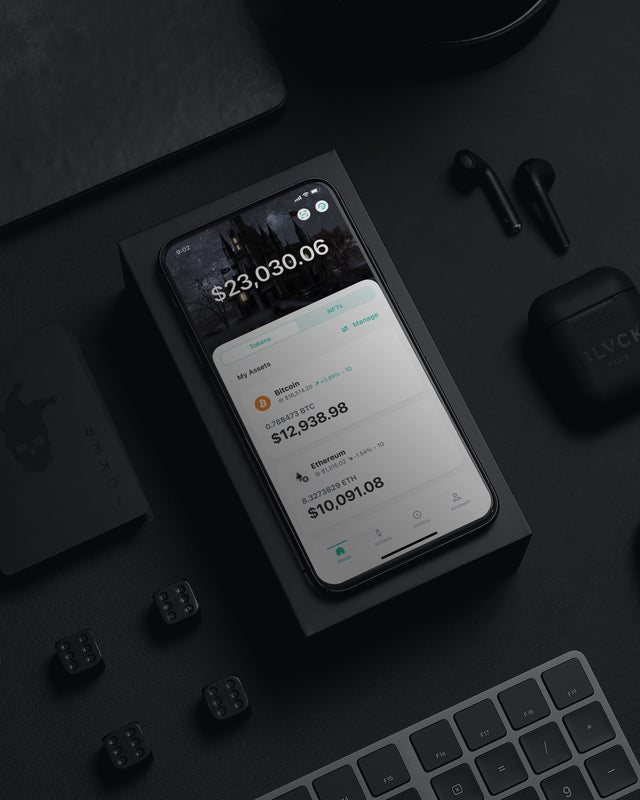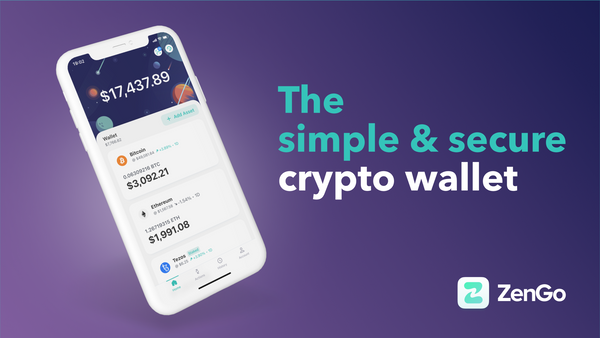Blvck: Staying Safe In A Web3 World
After FTX: The Current State Of Things
2022 has been an eventful year for Web3, with seismic revelations, interesting shifts, and ongoing conversations about the future of regulation.
October saw some of the biggest Web3 launches with major brands like Reddit, Warner Bros, and most recently, Binance (with Cristiano Ronaldo's NFT collection), dropping hot collections. In stark contrast to this excitement, we have also seen some of the most renowned names in this industry fall, including but not limited to, Three Arrows Capital, Luna, and recently FTX and Almeda Research. Whilst the full brunt of FTX's downfall has yet to be felt, it is likely to have a major effect on the Web3 industry to non-Web3 natives who are still hesitant about taking their first steps into this rapidly evolving space.
One of the many casualties from the FTX fallout is Genesis Global Capital. Due to the abrupt bankruptcy of FTX, they have suspended customer redemptions in their lending business. Gemini, another crypto exchange by the Winklevoss twins, has also seen its earn program affected by the insolvency of its principal lending partner, Genesis.
With everything that's happening right now, the move from custody to self-custody has never been more important - or widely embraced by the ecosystem.
What now?
So, you've seen the news and want to better protect your assets, or at least understand the urgency to do so? That's great! But how do you dive into it? This section will walk you through the practical process of setting up your wallet for the first time, along with tips on how to stay safe.
Custodial rights should be taken into consideration when deciding where to store your crypto assets. Centralized exchanges like Coinbase and Binance provide secure storage of your assets under their custody. As we saw with the recent FTX fallout, your assets may be at risk if anything were to happen to these exchanges.
In contrast, private wallets are non-custodial (or self-custodial), which means that only you will have access to your assets on the blockchain.
There are three main types of Private Wallets:
- Hardware Wallets: Commonly referred to as "cold storage," these are safe hardware devices in which your seed phrase never leaves the device thus keeping you safe from malicious threat actors looking to steal your assets.
- Software Wallets: A type of cryptocurrency wallet that requires no external hardware and is accessible through a website, or installed as a mobile app.
- MPC Wallets: Unlike traditional non-custodial wallets, MPC wallets do not have a private key or seed phrase vulnerability. Instead, they leverage Multiparty Computation (MPC), which breaks the traditional private key into separate "shares" - significantly decreasing the likelihood of being hacked.
Ledger and Trezor are some of the commonly used hardware wallets. With these types of wallets, your seed phrase never leaves the device thereby making it impossible for malicious actors who gained unauthorized access to your machine to learn your seed phrase.
Software Wallets are similar to hardware wallets in the sense that both a Private and Public key is created. The difference however is that the Private key is stored on your local machine thus making it susceptible to being revealed in an event of a hack. When you handle the private key yourself, you also run the risk of private key mismanagement. Chainalysis estimates that 20% of Bitcoin’s Supply is lost forever due to this. Source
Enter: Secure MPC Wallets with ZenGo
ZenGo is the most secure crypto wallet, as a self-custodial wallet with no private key vulnerability, but powered by MPC instead. With multi-chain support and live, 24/7 customer support, it’s an ideal choice for anyone interested to dive into Web3 or secure their crypto assets.
After learning about the inherent risks associated with self-custody using a traditional crypto wallet with private keys, one might feel discouraged from entering this space. ZenGo addresses this problem by eliminating the single point of failure, the Private key. Instead, ZenGo’s wallet is powered by MultiParty Computation (MPC), a technology used for years to secure billions of dollars of assets at the institutional level. ZenGo is the first crypto wallet to leverage this powerful technology in a retail crypto wallet.
Essentially, your private key is split into two parts, ZenGo calls them ‘secret shares’; one share is stored on your device and the other on ZenGo's servers. This allows you to interact with your assets on the blockchain by communicating between both the server and your device without the two of them ever coming into contact with each other.
ZenGo takes security a step further, incorporating a 3-Factor Authentication (3FA) model for wallet recovery - making it very simple for the user to recover their wallet thereby making it essentially impossible for someone else to steal or take over a ZenGo account that doesn’t belong to them.
The 3 factors are as follows:
- Email - Confirmed when first creating your wallet
- Recovery File - Your Recovery File will be stored in your respective cloud provider; iCloud for iOS and Google Drive for Android
- Facial ID - An encrypted and secure biometric scan of your face that will be stored on ZenGo’s servers for future verification
Together with these factors and MPC, ZenGo’s security is in a class of its own. You can read more about how ZenGo focuses on security here.
Creating Your Wallet
As ZenGo is a mobile-based software Wallet, it can be downloaded for iOS and Android devices from the App Store or Google Play Store, respectively. You can learn more about setting up your ZenGo Wallet from the Tweet below or by watching this video guide!
It's never been more important to use a self-custodial wallet.
— ZenGo Wallet (@ZenGo) November 7, 2022
But all wallets are NOT the same.
ONLY with ZenGo:
🟢 No private key vulnerability
🟢 Built-in #Web3 firewall
🟢 You control your assets
It’s time to control your #crypto. Learn more ⬇️https://t.co/4ohg2dQ9PE
When you set up your ZenGo wallet for the first time, you will also have access to a special edition Blvck background in the app itself, as seen below!

Safety Tips
- In Crypto and Web3 in general, cyber hygiene is of the utmost importance, and the golden rule of crypto is to not, under any circumstances, give out your private key to anyone. Assume anyone or any website asking for it to have malicious intentions.
- “Not your keys, not your crypto” is a phrase often echoed in Web3, and for a good reason – if you do not have your private key, you do not truly own the crypto. Always move your crypto from exchanges to your hardware wallets like Ledger and Trezor if you have them or MPC wallets like ZenGo with no private key vulnerability.
- When sending/ withdrawing funds, always send a small amount to test. Funds sent wrongly are irreversible and lost forever.
- Always read and verify a Transaction carefully before signing. Malicious transactions can be well designed to prey on the innocent. You may unknowingly give access to all your funds in your wallet even if it was not your intention to do so.
- Be EXTRA wary of suspicious attachments and websites sent by unknown individuals. If they are sketchy, it is likely to be a scam. Scams in the Web3 world are prevalent, and it is imperative that you know how to identify these and protect yourself against them.
Note: This article does not constitute an endorsement of any financial product or service. Any partnerships as set out in this article are for marketing purposes only. You must always do your own research and seek advice.
ZenGo Blvck Discord Blvck Twitter Blvck Instagram Blvck Facebook Blvck Staking


